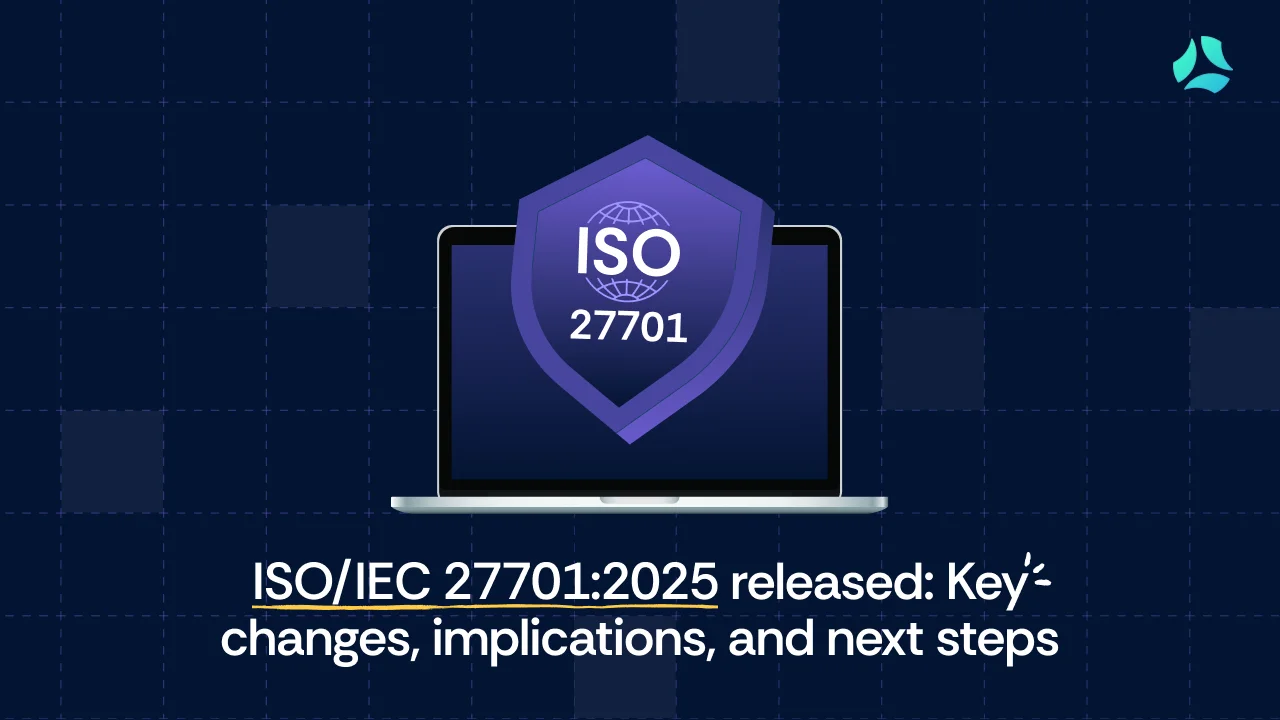How GenAI Is Reshaping GRC: From Checklists to Agentic Risk Intelligence

A Tectonic Shift Driven by Regulation
In March 2023, the U.S. Securities and Exchange Commission (SEC) proposed sweeping changes to its cybersecurity disclosure requirements for public companies—marking a pivotal moment in the evolution of Governance, Risk, and Compliance (GRC). These new rules, build on state level data breach notification requirements to mandate that organizations disclose material cybersecurity incidents within four business days and maintain rigorous internal controls around cyber risk reporting at the board-level. This also has serious implications down the supply chain as large companies start looking for more mature cybersecurity practices from their smaller vendors.
This regulatory milestone is just one in a series of global developments—from the European Union's Digital Operational Resilience Act (DORA) to India's DPDP Act—that signal a shift: risk management is no longer an operational back-office function. It is now a board-level imperative. In this new era, Generative AI (GenAI) is emerging as a transformative force, helping businesses move from reactive compliance toward predictive, intelligent risk management.
The Evolution of GRC
The GRC market has not traditionally been thought of as the “bleeding edge of innovation" in the cybersecurity market. Far from it. Over the past two decades, the discipline has evolved in step with business needs, regulatory changes, and technology maturation. Now, as companies large and small are feeling pressure to not only document their cybersecurity controls, but demonstrate their cyber risk maturity, we are witnessing the newest wave in GRC, just in time for the AI revolution. We can think of GRC in four primary waves:
GRC 1.0: Manual, Reactive, and Fragmented

In the early 2000s, risk and compliance programs were often synonymous with three-ring binders and endless spreadsheets. The post-Enron regulatory wave—Sarbanes-Oxley (2002) in the U.S., Basel II internationally—forced enterprises to formalize internal controls and documentation. However, most efforts remained siloed across departments, with limited ability to analyze or manage risk holistically.
Smaller organizations, without the benefit of dedicated compliance teams, often assigned risk management to finance or IT staff—leading to process overload and human error. Even larger organizations had very few options for automation and risk based frameworks such as the NIST Cybersecurity Framework, had yet to be invented leaving little priority or focus on digital risks at an executive level.
GRC 2.0: Centralized Platforms for the Enterprise

The 2010s saw the rise of monolithic GRC suites—think RSA Archer, Metricstream, and Auditboard—that brought structure and auditability to compliance management. These tools centralized workflows, allowed automated audit trails, and helped heavily regulated industries like financial services and healthcare manage their obligations. They were also built for horizontal risk use cases- working across financial regulations to ESG and everything in between – which worked for these large enterprise level organizations.
However, these platforms came with limitations. They were expensive, complex to deploy, and often required extensive customization. For SMBs, these tools remained out of reach—exposing a widening gap between enterprise-grade GRC and the rest of the market.
GRC 3.0: Specialization, CyberGRC, and Cloud-Native Automation

The 2020s ushered in a new phase: GRC became modular, API-driven, and deeply intertwined with cybersecurity. With this focus on data security requirements, the legacy platform set up was untenable for SMBs especially as technology infrastructure evolves at a breakneck speed. This pushed a natural shift in GRC users from COOs and CFOs to CISOs, and as threats like ransomware, supply chain attacks, and third-party breaches intensified, organizations began embedding cyber risk directly into their governance frameworks. Cloud-native platforms rose to prominence, offering continuous control monitoring, audit automation, and out-of-the-box compliance workflows.
Crucially, these platforms democratized GRC. They enabled startups and scaleups, many of whom are cloud first, or “cloud native", to achieve certifications like SOC 2 and ISO 27001 without hiring full compliance teams. By providing standardized frameworks for compliance this allowed them to easily implement changes in with cloud infrastructure like AWS, GCP, and Microsoft 365.
This period also marked a philosophical shift: from reactive documentation to real-time assurance.
GRC 4.0: Agentic GRC and the Age of Intelligent Automation

We are now entering the era of "Agentic GRC"—where GenAI does more than automate workflows; it contextualizes, interprets, and even recommends decisions. These AI-powered systems don't just answer what happened, but why it matters and what to do next.
A few examples of this shift include:
- Real-time risk inference: AI models ingest alerts from SIEM tools, correlate them with business context (e.g., critical systems or regulated data), and determine risk impact autonomously.
- Proactive compliance readiness: AI agents parse regulatory updates like NIS2, CCPA, or PCI DSS 4.0 and map them to an organization's existing controls, highlighting potential gaps instantly.
- Predictive analytics: Instead of reactive risk assessments, agentic systems analyze supplier behavior, geopolitical signals, or code commit history to flag emerging threats before they escalate.
Why Now? Pressure Points For Change

Today, the demand for agile, AI-powered GRC is most acute in high-risk, high-regulation sectors like healthcare. Consider the 2023 cyberattack on Change Healthcare, which disrupted U.S. prescription drug processing and compromised sensitive patient data across thousands of providers. Incidents like these have prompted new regulatory scrutiny from the U.S. Department of Health and Human Services (HHS) is now considering cybersecurity performance standards for all hospitals and payers.
For smaller providers, these mandates are daunting. GenAI-driven GRC platforms can help by:
- Automating evidence collection and risk scoring
- Translating regulatory language into actionable tasks
- Surfacing anomalies from across disparate data sources
AI allows under-resourced teams to perform like mature compliance departments—shifting the curve of organizational resilience.
GRC is no longer just about avoiding fines—it's about enabling trust, resilience, and growth. As threats evolve and compliance burdens multiply, GenAI is the answer to keep pace by evolving GRC to to be scalable, intelligent, and adaptive to changes in regulation and threats.
In today's risk landscape, that's not just transformative—it's essential.


















